The beauty of Anthurium blossoms enchants all plant enthusiasts, so it’s completely understandable that growers get frustrated when they don’t see any flowers on the plant.
But the key to a healthy and happy Anthurium lies in ensuring the best possible conditions. Generally speaking, it’s not too hard to maintain this plant but its basic requirements must be met.
If there aren’t any flowers on your flamingo plant, don’t panic, the problem can be fixed.
In this article, I’ll show you some tried-and-true tips to encourage your Anthuriums to flower.
Let’s get started!
More About Anthurium Blooms
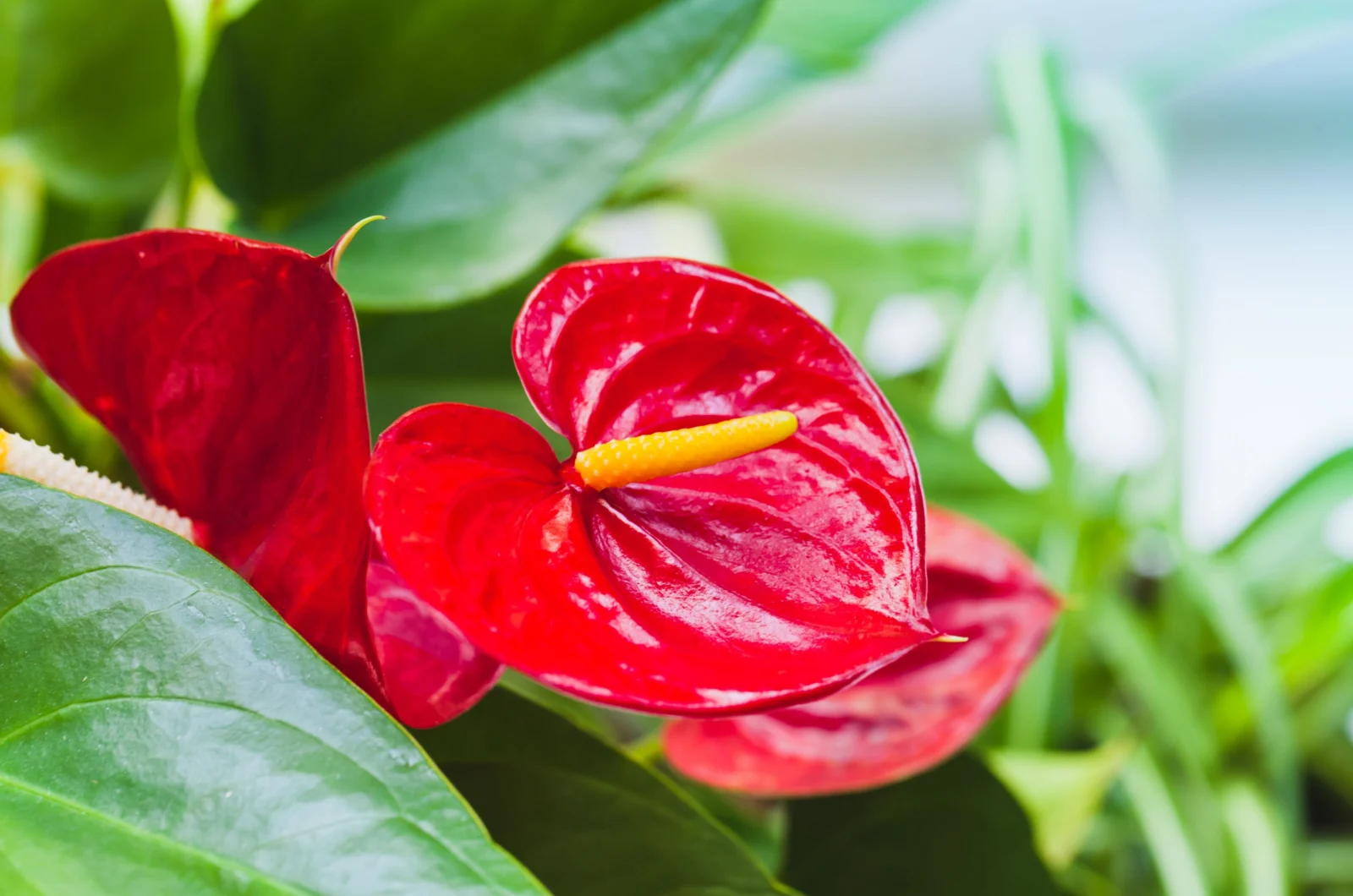
Something many people don’t know is that these plants don’t produce real flowers. What you see is actually a special type of leaf commonly referred to as the spathe.
The real flowers are there but they’re super small and densely packed on an inflorescence. You can see them if you take a close look at the narrow tail that grows from the spathe.
Well, it’s hard to pronounce all these things when talking about Anthurium, so people use the term flower for both spathe and inflorescence.
But both botanists and growers definitely agree on one thing: these plants look breathtaking when they display this growth.
Many think that Anthuriums come in red only. But remember that these plants are also known as flamingo plants and the reason for such a nickname is that there are various colors of blooms with this plant.
White, pink, red, or a combination of these colors can be seen, depending on the variety.
The leaves are heart-shaped, which adds a special touch of beauty to the plant.
Interestingly, the blooming season of flamingo plants typically lasts for about three months and then they enter dormancy and stay in that stage for the next three months.
However, if you meet all its requirements, you can see your Anthirum in bloom year-round.
Now let’s see what it takes to get the flowers on these spectacular plants.
1. Don’t Overwater
No matter which Anthurium species you have, radicans, chamberlainii, or crystallinum, you should know that these plants are sensitive to overwatering.
This condition leads to fewer or even no blooms, and it can result in death if you don’t treat it in time. The biggest danger is root rot disease, which develops if the roots are sitting in water for too long.
One of the most common mistakes of houseplant growers is relying on a fixed watering schedule. The phrase “regular watering” tricks many into thinking that the plants should be watered on a fixed schedule.
Unfortunately, this practice frequently leads to watering issues because the chances that the plant absorbs the same amount of water every time are really low.
So, make sure to water your Anthuriums when the top few inches of the growing medium dry out. Instead of adding water on the same day each week, check the soil moisture content and add water only if the top part of the soil is dry!
2. Choose The Perfect Planters
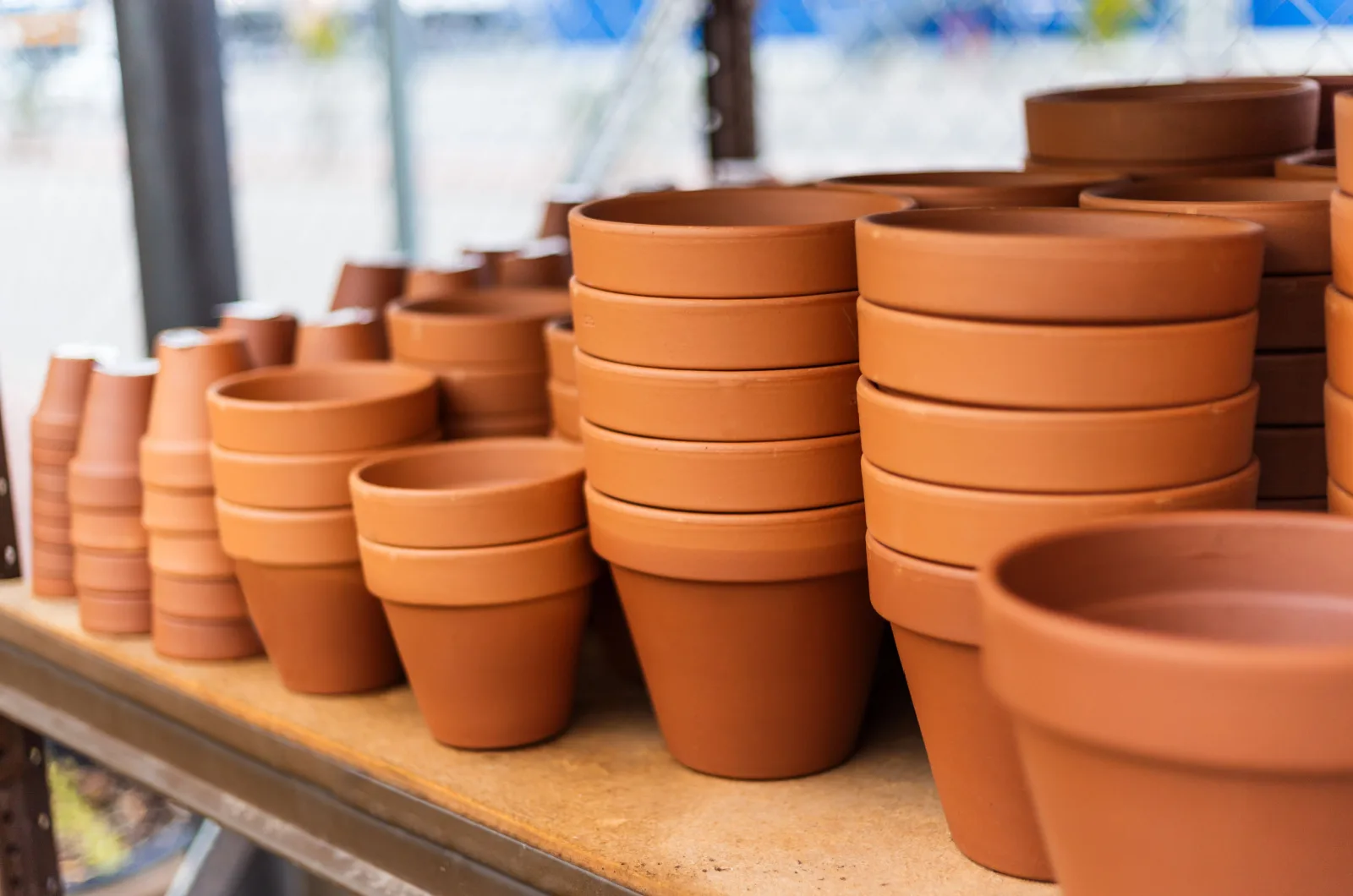
How many of you thought about the material when you were choosing the pot for your Anthurium? Most growers choose containers based on their looks, which is completely normal because a beautiful pot adds more beauty to the plant.
However, this isn’t a good practice because pot material and structure play an important role when it comes to soil moisture content.
The first thing you should pay attention to when choosing a pot is the holes in the bottom. Their main purpose is to allow excess water to drain from the soil.
I highly recommend using terracotta pots because they’re porous and will help the excess moisture to evaporate faster from the soil.
3. Use Porous Potting Mix
Poor drainage causes many issues in plants and lack of blooms is just one of them. Anthuriums, just like most other common houseplants, prefer free-draining soil types with good air circulation.
If the soil is too compact, the roots of flamingo plants can’t penetrate the soil the way they should. In addition to restricted growth, roots are in danger of drowning because compact soil types retain too much moisture.
From my experience, standard potting soil amended with perlite, pumice, or orchid bark works best for flamingo plants.
These ingredients are porous and will enhance drainage so the roots will have enough air to breathe.
4. Give The Plant Bright Indirect Light
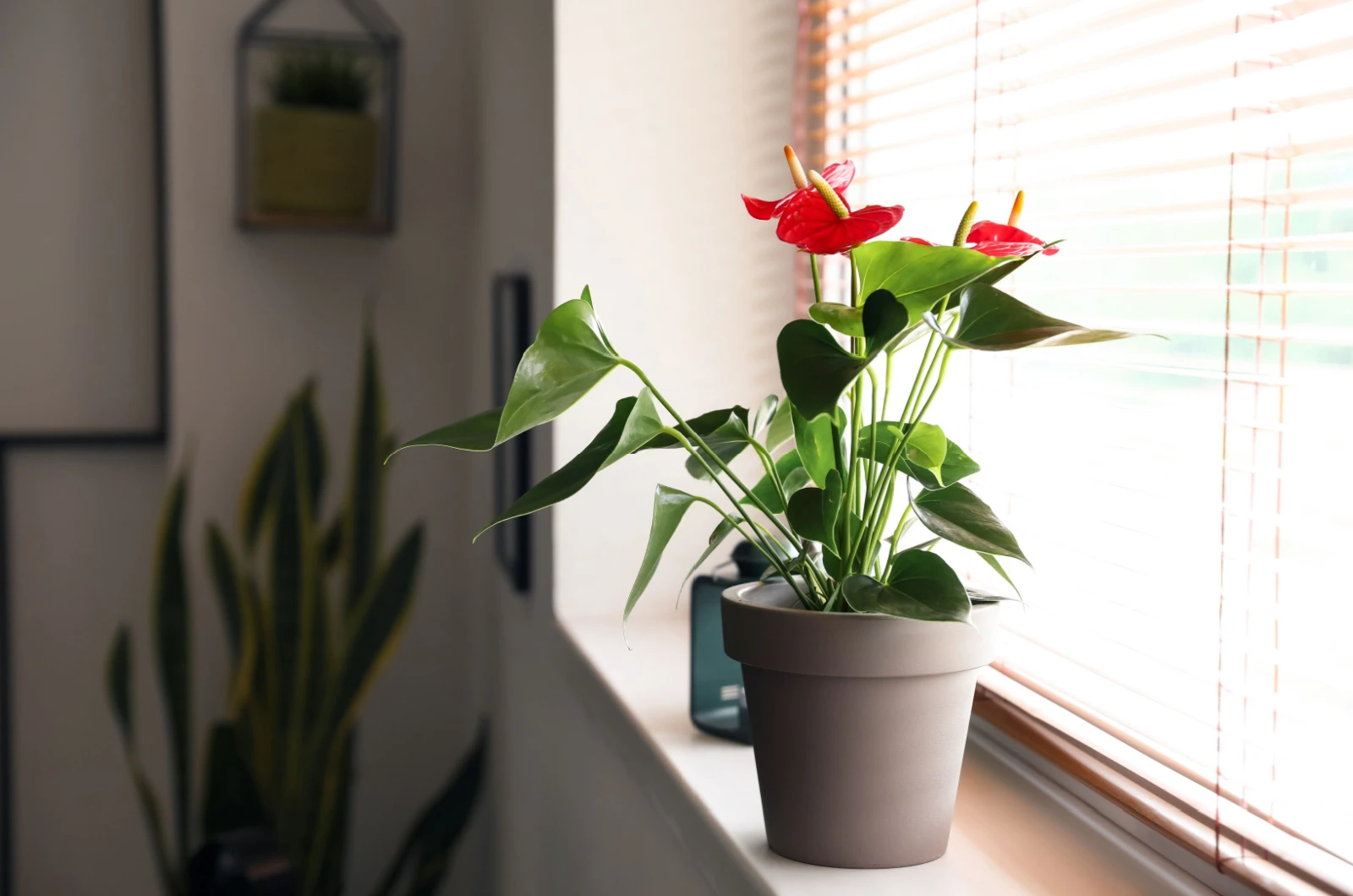
If you want to see flowers, you need to fulfill Anthuriums’ light needs. These plants are native to tropical regions and they don’t receive direct sunlight because of taller plants that block it.
However, they still get the sunlight that goes through the foliage of taller plants.
This is exactly what we should do in our homes. Of course, I’m not saying to bring a 15-foot-tall plant to filter the sunlight for your Anthurium, but you should find a spot that receives bright indirect light.
If the plant doesn’t receive enough light, it won’t generate flowers. On the other hand, if it receives too much light, it will scorch and burn the leaves and existing flowers.
How to avoid these issues? You can put your flamingo plant near a south-facing window and put up sheer curtains to filter the light.
If you don’t have such a spot available, you can put your Anthurium near windows with southern and western exposure.
Spots near north-facing windows shouldn’t be taken into consideration because they don’t receive enough sunlight.
If you’re unsure if your Anthurium is receiving enough sunlight, you can install artificial lights.
5. Increase Humidity
As mentioned earlier, flamingo plants are native to tropical regions and as you may know, humidity in these regions is pretty high.
So, one of the reasons why there aren’t any blooms on your Anthurium may be because of low humidity.
Luckily, there are multiple methods that you can use to increase moisture around your flamingo plants.
Many growers put these plants in their bathrooms or kitchens because the humidity in these rooms is naturally higher. But remember that if you decide on this method, the room must receive enough bright indirect light.
You can mist the leaves of your Anthurium or put a pebble tray below the pot.
If you’re a beginner grower and unsure about these methods, you can always install a humidifier.
6. Ensure The Ideal Temperature
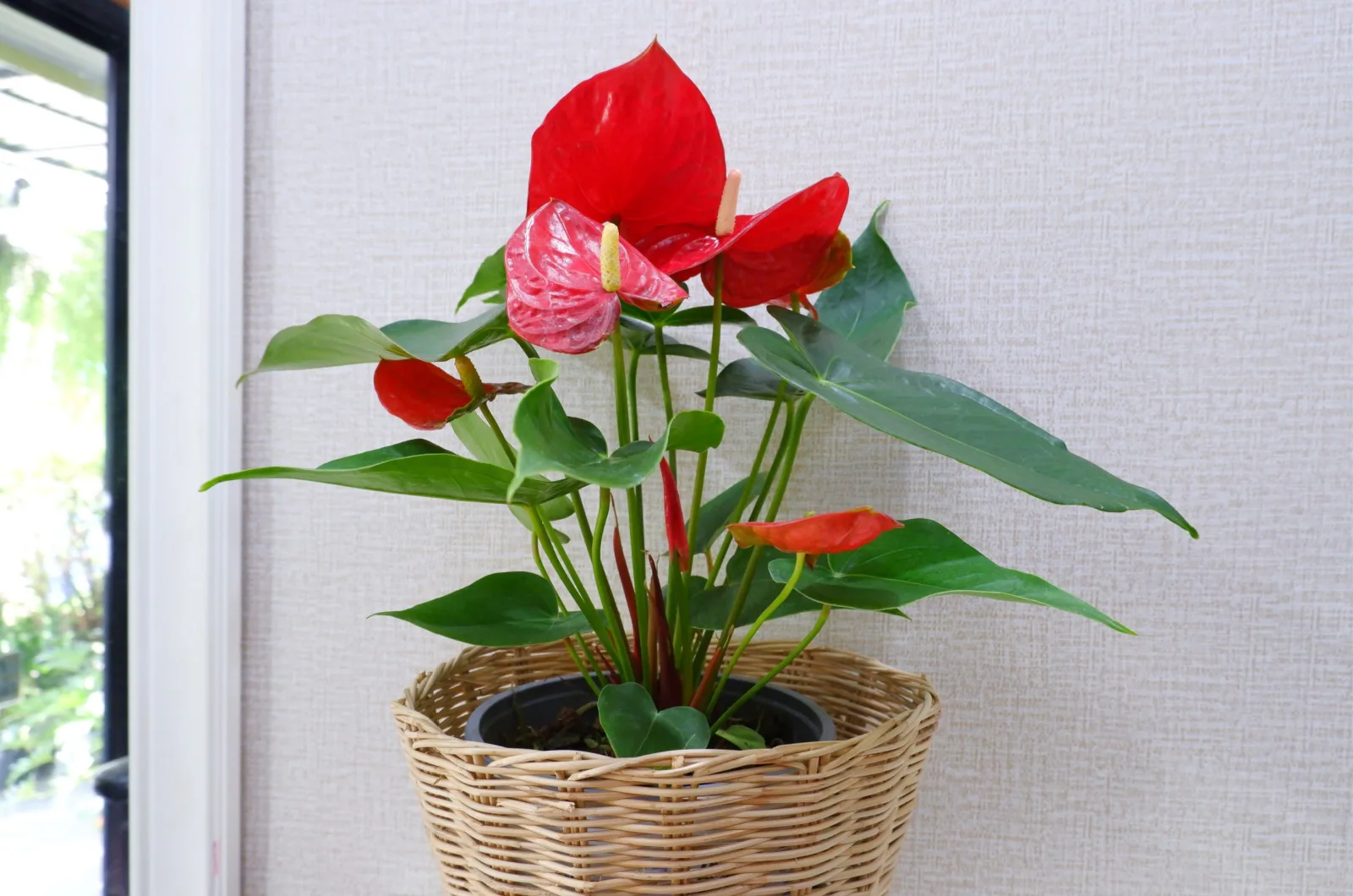
Houseplants can be real drama queens and there are many things that can get in their way. Temperature is definitely one of these things.
To be more precise, temperature fluctuations can cause a lack of flowers in your flamingo plants.
The best idea would be to keep this tropical beauty away from cold drafts and windows and doors that open and close too much. The recommended temperature range for flamingo plants is from 70 to 85 degrees Fahrenheit.
7. Feed Frequently But Not Too Much
Nature provides plants with all the nutrients they need through rainwater and decaying materials of other plant species.
When grown as houseplants, Anthuriums are heavy feeders, but if there aren’t any flowers, your plants may need supplemental feeding.
The best method is to fertilize your Anthuriums frequently during the growing season but you should never use too much fertilizer because it can have an adverse effect.
The best fertilizer for Anthuriums is balanced and liquid; before applying it, read the instructions on the label carefully.
8. Flush The Soil
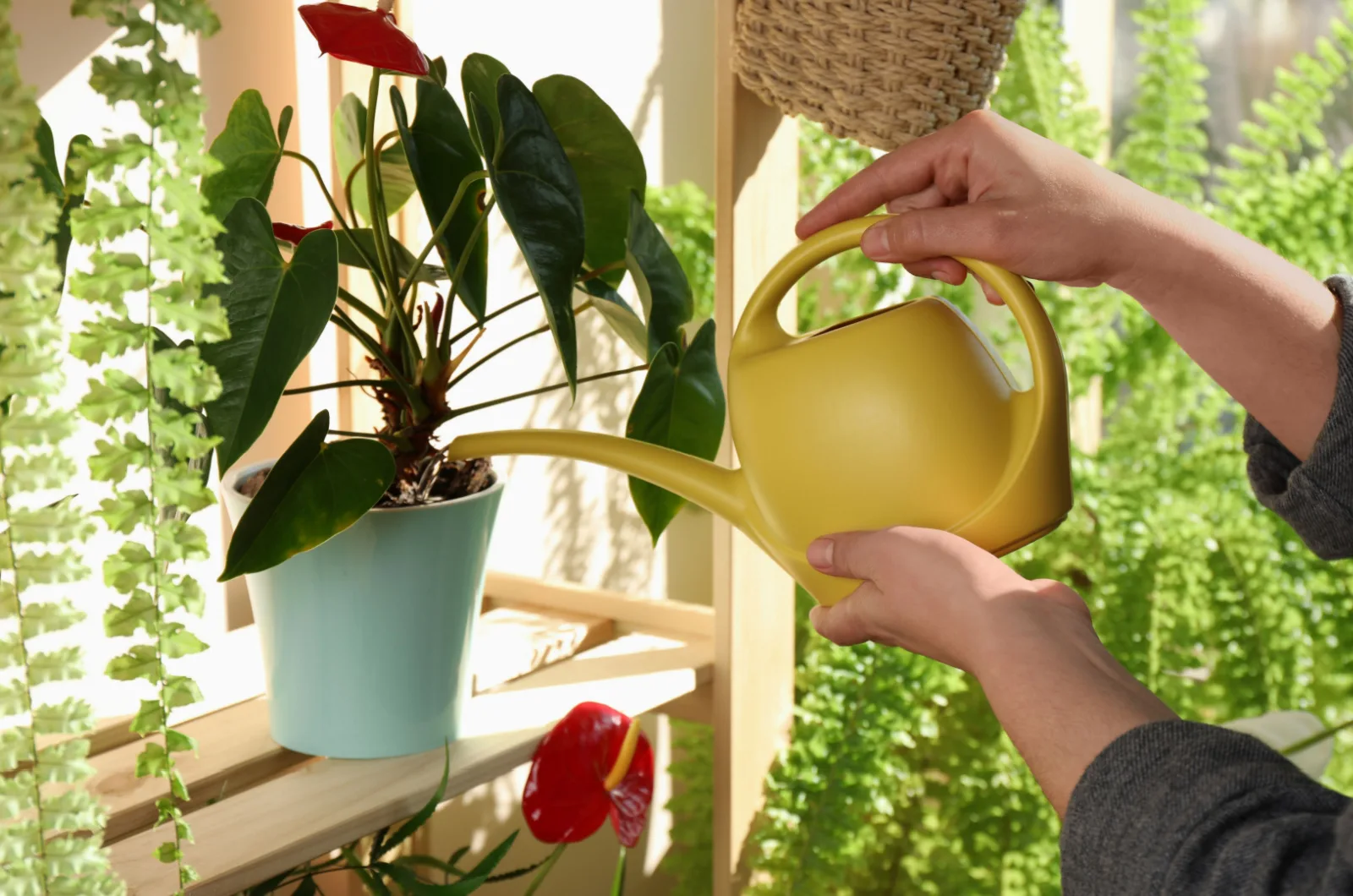
Fertilization is beneficial for plants in many ways but the main drawback is that the salts build up in the soil over time.
This may not necessarily be the reason for the lack of blooms in your Anthurium but if combined with any of the issues above, the plant most likely won’t flower.
All you need to do is flush the soil with water a few times and let it drain well. I employ this technique yearly for all my houseplants.
9. Remove Wilted Blossoms
The flowers can wilt or fade for various reasons but instead of crying over spilt milk, you should remove them.
They most likely won’t recover from this condition and the problem is that they’ll still use the plant’s energy and nutrients.
Once you remove them, your Anthurium will have enough energy to focus on new growth and will generate new flowers.
10. Repot The Plant
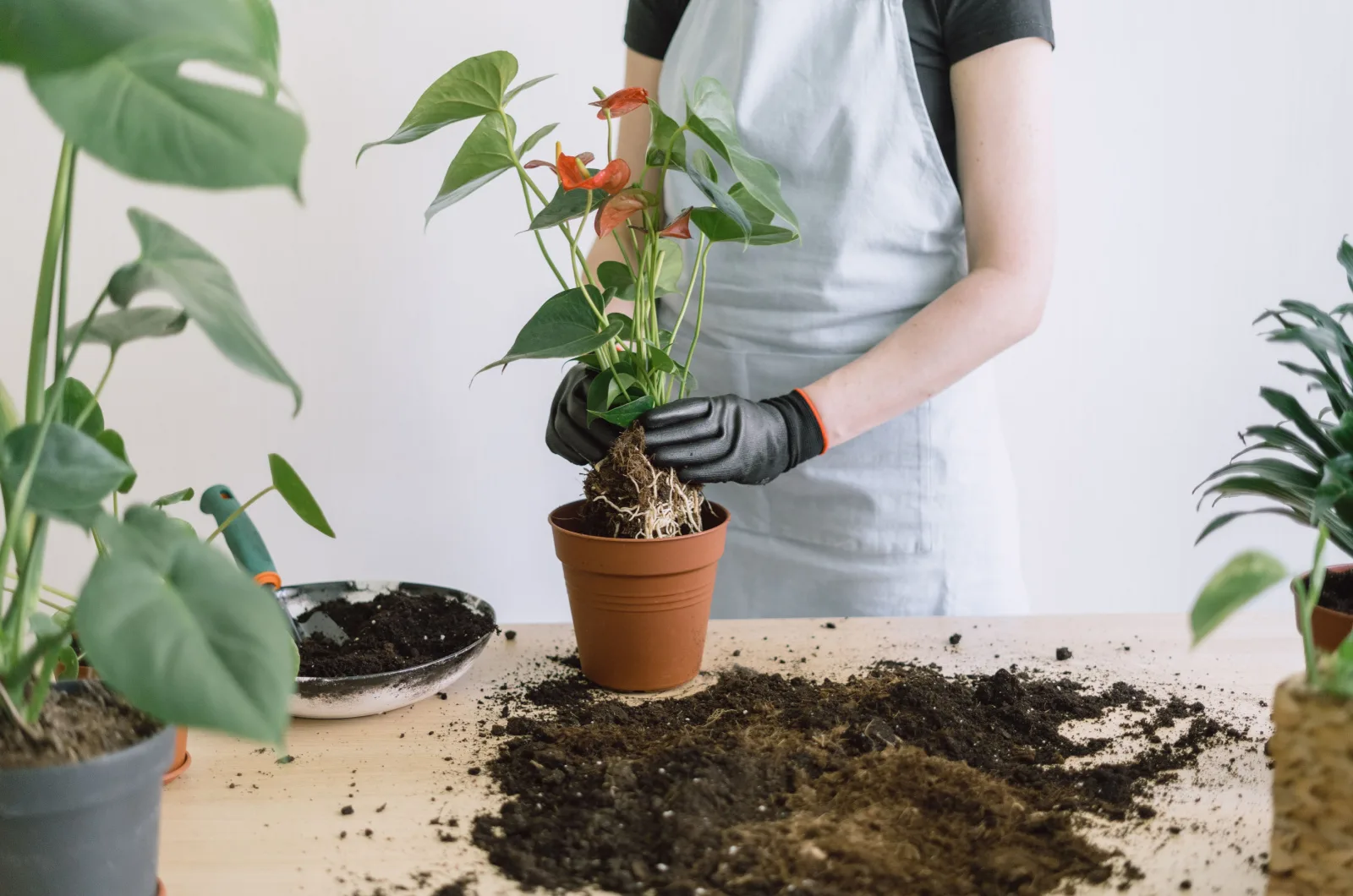
If you have checked and fixed all the potential issues listed above, the only thing that remains to be done is repot your precious Anthurium.
If you have a healthy plant it will keep growing and, after some time, the current container will become too small. The roots won’t have enough space to grow so the plant won’t reach its full potential, i.e., generate flowers.
If you notice some Anthurium roots poking through the soil surface, it’s a telltale sign that you should repot the plant. So take a new container that’s about 2 inches larger in diameter than the previous one, fill it with suitable soil, and put your flamingo plant in it.
All the methods described above will help you get a thriving and lush Anthurium plant and it will reward you with its unusual yet splendid flowers!